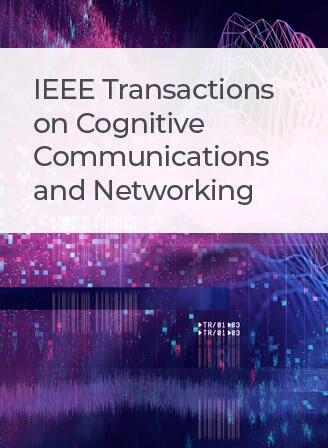使用深度学习的通信系统设计:变分推理的视角
IF 7
1区 计算机科学
Q1 TELECOMMUNICATIONS
IEEE Transactions on Cognitive Communications and Networking
Pub Date : 2020-04-03
DOI:10.1109/TCCN.2020.2985371
引用次数: 19
摘要
近年来,利用深度学习设计端到端通信系统的研究已经产生了优于传统通信方案的模型。这些架构大多利用自编码器来设计发射器上的编码器和接收器上的解码器,并通过将发送符号建模为编码器的潜在代码来共同训练它们。然而,在通信系统中,接收机不得不处理发射符号的噪声损坏版本。传统的自动编码器不能处理被噪声破坏的潜在编码。在这项工作中,我们提供了一个框架来设计端到端通信系统,该系统考虑了噪声破坏传输符号的存在。该方法采用深度神经结构。基于变分推理的概念,导出了优化这些模型的目标函数。此外,渠道类型等领域知识可以系统地集成到目标中。通过数值模拟,与之前利用深度学习模型的工作相比,所提出的方法可以一致地产生具有更好包装密度的模型,并且在多个流行的通道模型中更快地实现。本文章由计算机程序翻译,如有差异,请以英文原文为准。
Design of Communication Systems Using Deep Learning: A Variational Inference Perspective
Recent research in the design of end to end communication system using deep learning has produced models which can outperform traditional communication schemes. Most of these architectures leveraged autoencoders to design the encoder at the transmitter and decoder at the receiver and train them jointly by modeling transmit symbols as latent codes from the encoder. However, in communication systems, the receiver has to work with noise corrupted versions of transmit symbols. Traditional autoencoders are not designed to work with latent codes corrupted with noise. In this work, we provide a framework to design end to end communication systems which accounts for the existence of noise corrupted transmit symbols. The proposed method uses deep neural architecture. An objective function for optimizing these models is derived based on the concepts of variational inference. Further, domain knowledge such as channel type can be systematically integrated into the objective. Through numerical simulation, the proposed method is shown to consistently produce models with better packing density and achieving it faster in multiple popular channel models as compared to the previous works leveraging deep learning models.
求助全文
通过发布文献求助,成功后即可免费获取论文全文。
去求助
来源期刊

IEEE Transactions on Cognitive Communications and Networking
Computer Science-Artificial Intelligence
CiteScore
15.50
自引率
7.00%
发文量
108
期刊介绍:
The IEEE Transactions on Cognitive Communications and Networking (TCCN) aims to publish high-quality manuscripts that push the boundaries of cognitive communications and networking research. Cognitive, in this context, refers to the application of perception, learning, reasoning, memory, and adaptive approaches in communication system design. The transactions welcome submissions that explore various aspects of cognitive communications and networks, focusing on innovative and holistic approaches to complex system design. Key topics covered include architecture, protocols, cross-layer design, and cognition cycle design for cognitive networks. Additionally, research on machine learning, artificial intelligence, end-to-end and distributed intelligence, software-defined networking, cognitive radios, spectrum sharing, and security and privacy issues in cognitive networks are of interest. The publication also encourages papers addressing novel services and applications enabled by these cognitive concepts.
 求助内容:
求助内容: 应助结果提醒方式:
应助结果提醒方式:


